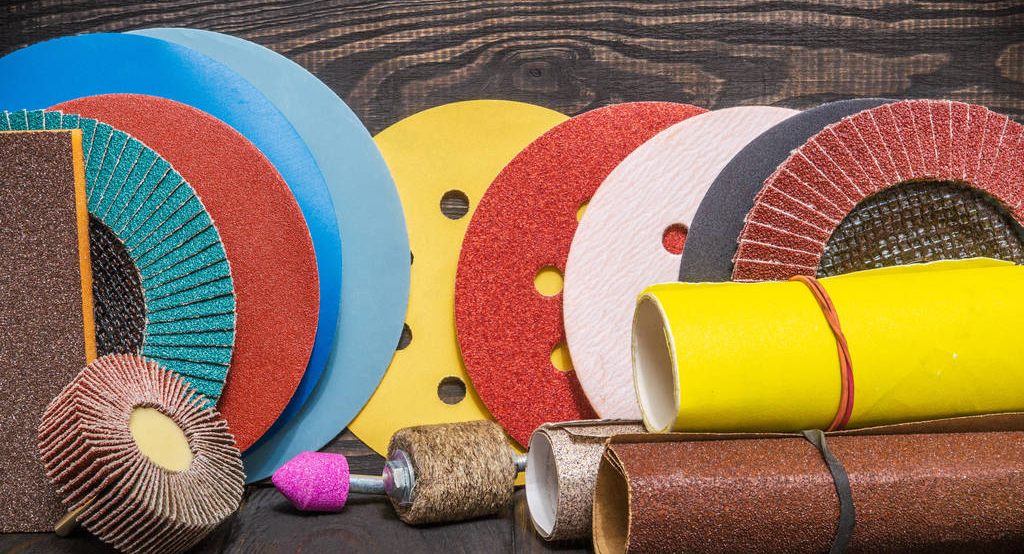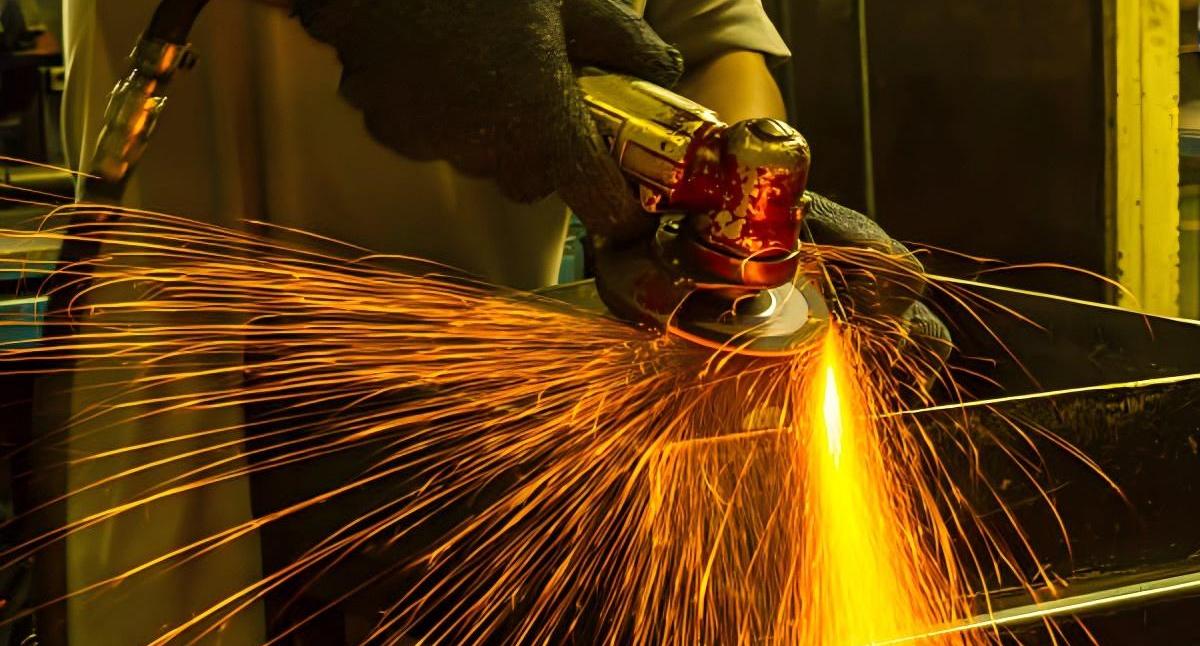Abrasives are essential materials in various industrial processes, helping to shape, polish, cut, and finish surfaces in numerous fields. But what does “abrasive” truly mean, and how do these materials work in practical applications? This article delves into the basics of abrasives, their types, and their importance across industries.
Understanding Abrasives: Definition and Purpose
An abrasive is a substance that has a rough, hard texture and is capable of wearing away or reshaping softer materials through friction. Abrasives work by using mechanical force to remove material from a workpiece’s surface, refining it for the desired finish, smoothness, or shape. This unique ability to smooth or reshape materials makes abrasives crucial in a range of applications, from manufacturing to construction and even in household cleaning products.
Types of Abrasives: Natural and Synthetic
Abrasives are typically categorized into natural and synthetic materials, each with unique properties suited to specific applications.
- Natural Abrasives: These are minerals or stones found in nature that can be used in their raw or slightly processed form. They include:
- Quartz: Known for its hardness, quartz is used in sandpaper and polishing compounds.
- Garnet: A popular abrasive for sandpaper, garnet is suitable for softer materials like wood.
- Diamond: The hardest known natural abrasive, diamond is used in cutting tools, especially for hard materials like glass, ceramics, and metals.
- Pumice: A softer abrasive often used in polishing and in products like exfoliating skin scrubs.
- Synthetic Abrasives: Manufactured abrasives are created through chemical or physical processes to achieve specific characteristics. These include:
- Aluminum Oxide: Known for its strength and durability, it’s used in grinding wheels and sandpaper.
- Silicon Carbide: Suitable for high-speed grinding applications, especially with metals and ceramics.
- Ceramic: A dense abrasive used in high-precision applications like metalworking.
- Cubic Boron Nitride (CBN): One of the hardest synthetic materials, it’s often used in applications requiring high thermal stability, such as in metal grinding.
Properties of Abrasives
The effectiveness of an abrasive material depends on various properties, which determine how it interacts with different surfaces. Key properties include:
- Hardness: Abrasives need to be harder than the material they are intended to shape or finish.
- Toughness: The ability of an abrasive to withstand pressure without fracturing. For example, diamond is highly hard but also tough.
- Grain Shape: Abrasives with sharper, angular grains cut faster and are suitable for applications where high material removal is required. Rounded grains, on the other hand, create a smoother finish.
- Grain Size: Also known as grit size, it determines how coarse or fine an abrasive is. Coarse grains remove material faster, while fine grains provide a smooth finish.
- Friability: The tendency of an abrasive to break down during use, exposing new cutting edges. High friability is beneficial for maintaining a sharp edge.
Common Abrasive Tools and Their Applications
Abrasives are available in many forms and used in various tools. Let’s look at some of the most common abrasive tools and their typical applications:
- Sandpaper: Used primarily in woodworking, automotive, and DIY projects, sandpaper consists of abrasive grains adhered to a backing material, like paper or cloth. The grit size ranges from coarse to very fine, depending on the level of smoothness desired.
- Grinding Wheels: These are rigid wheels made of abrasive particles held together by a bonding material. Grinding wheels are widely used in metalworking, cutting, and finishing operations for tasks like shaping, deburring, and material removal.
- Cutting Discs: Thin and durable, cutting discs are designed for cutting through metal, stone, or ceramics. They are often made from synthetic abrasives like aluminum oxide or silicon carbide.
- Abrasive Belts: Used in belt sanders, abrasive belts are ideal for high-speed material removal in industries like metalworking and woodworking. They can be coarse or fine, depending on the surface finish requirements.
- Abrasive Pads and Discs: Often found in household and automotive applications, abrasive pads and discs are used for cleaning, polishing, and light sanding tasks. They are typically made from synthetic fibers coated with abrasive particles.
- Flap Discs: Commonly used for grinding, deburring, and blending applications, flap discs are composed of overlapping abrasive sheets attached to a disc. They provide a smooth finish while also removing material efficiently.
- Blasting Abrasives: Materials like sand, glass beads, and steel grit are propelled at high speed to clean or texture a surface. Blasting is widely used in preparing metal surfaces for painting and coating.
Applications of Abrasives Across Industries
Abrasives play a significant role in many sectors due to their versatile applications. Here are some key industries where abrasives are indispensable:
- Manufacturing: In metalworking and manufacturing, abrasives are used for grinding, cutting, polishing, and finishing components. Processes such as surface preparation, paint removal, and rust cleaning all rely on abrasives.
- Construction: Abrasives are essential in construction for cutting and shaping materials like stone, concrete, and tiles. Diamond blades and grinding wheels are commonly used to achieve precision cuts and smooth finishes.
- Automotive: In the automotive industry, abrasives are used in bodywork repairs, paint jobs, and detailing. Sandpapers and abrasive pads help prepare surfaces, while polishing compounds create high-quality finishes.
- Electronics and Precision Engineering: Abrasives are used to polish, lap, and grind small, delicate components in electronics and precision engineering. High-precision applications require abrasives that can work with exacting standards.
- Household and DIY: Abrasives are frequently used in household cleaning products, such as scouring pads and polishers. They are also popular for DIY tasks, like sanding furniture, finishing floors, and removing paint.
- Jewelry and Gemstone: Abrasives like diamond powder and silicon carbide are used in the jewelry industry to shape and polish gemstones, providing the sparkling finish that enhances their beauty.
Choosing the Right Abrasive
Selecting the correct abrasive material is crucial to achieving the desired results efficiently and safely. Here are factors to consider when choosing an abrasive:
- Material Hardness: The abrasive should be harder than the material being processed. For example, diamonds are suitable for cutting hard stones or metals, while softer materials like pumice work well on softer surfaces.
- Finish Required: Coarse-grit abrasives remove material quickly but leave a rough surface. Finer grits provide a smoother finish, which is ideal for final polishing or finishing.
- Work Speed and Efficiency: Some abrasives are better suited for high-speed applications, such as grinding wheels for metal removal. Lower-speed abrasives, like polishing compounds, work well for detail work.
- Durability and Cost: Synthetic abrasives are typically more durable and cost-effective than natural abrasives. However, specific applications may still require natural options, like diamond abrasives for precision work.
The Environmental Impact of Abrasives
While abrasives are highly beneficial, their use can have environmental consequences. Many abrasive materials generate dust and waste during the finishing process, which can contribute to air and water pollution. To address these issues, the industry has made advances in developing eco-friendly abrasives and recyclable materials. For instance:
- Water-based Abrasives: These abrasives use water as a cooling agent to reduce dust generation and extend the life of the abrasive tool.
- Recycled Abrasives: Steel grit, glass beads, and some sandblasting materials can be collected and reused, reducing waste and minimizing environmental impact.
- Biodegradable Abrasives: Materials like walnut shells and corn cob grit offer eco-friendly alternatives for applications that don’t require extreme hardness.
Innovations in Abrasive Technology
Recent advancements in abrasive technology focus on improving efficiency, reducing costs, and minimizing environmental impact. Some of these innovations include:
- Superabrasives: Materials like diamond and cubic boron nitride (CBN) are classified as superabrasives because of their superior hardness and longevity. They are used in high-precision and demanding applications.
- Self-Sharpening Abrasives: These abrasives are engineered to continuously reveal new cutting edges as they wear down, ensuring consistent performance without frequent replacement.
- Non-Woven Abrasives: Composed of synthetic fibers bonded with abrasive grains, these abrasives are flexible and adaptable to various surfaces, making them ideal for cleaning and finishing.
- Micro Abrasives: Used for delicate tasks like polishing electronic components, these abrasives are engineered at the microscopic level to provide controlled and precise results.
Safety Considerations in Using Abrasives
While abrasives are invaluable tools, handling them safely is essential to avoid injuries and ensure effective results. Basic safety tips include:
- Wear Protective Gear: Safety goggles, gloves, and face masks help protect against dust, debris, and abrasive particles.
- Follow Speed Recommendations: Many abrasives are rated for specific speed limits. Exceeding these limits can lead to tool failure or breakage.
- Use Dust Collection: When using abrasives that generate dust, such as sandpaper or grinding wheels, dust collection systems can help reduce airborne particles and improve workplace safety.
- Proper Ventilation: Ensure adequate ventilation when working with abrasives, especially in enclosed spaces, to prevent the accumulation of harmful dust and vapors.
- Inspect Tools Regularly: Regular maintenance and inspection of abrasive tools, like grinding wheels and cutting discs, help prevent accidents caused by tool wear or failure.
Conclusion: The Importance of Abrasives in Modern Industry
In conclusion, abrasives are essential materials across various industries, providing critical functions in shaping, finishing, and refining surfaces with precision. From natural options like diamond to advanced synthetic materials, each abrasive is tailored for specific applications, enabling efficiency and high-quality results in fields ranging from manufacturing to household tasks. The ongoing innovation in abrasive technology continues to enhance performance, safety, and environmental sustainability, making abrasives a fundamental part of modern industrial and consumer applications.


